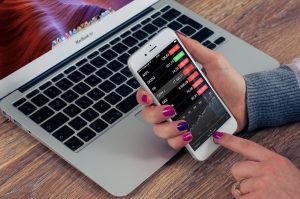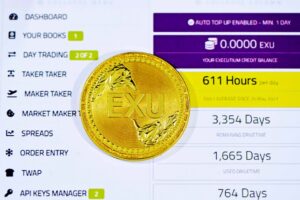Understanding Leverage in Forex Trading: An Example of How it Works
Leverage is a key concept in forex trading that allows traders to amplify their potential returns by borrowing money from their brokers. It is a double-edged sword that can significantly increase profits but also magnify losses. In this article, we will explore the concept of leverage in forex trading and provide an example of how it works.
What is Leverage?
Leverage is essentially a loan provided by a broker to a trader, allowing them to control a larger position in the market with a smaller amount of capital. It is expressed as a ratio, such as 1:100 or 1:500, indicating the amount of leverage a trader can access. For example, a leverage of 1:100 means that for every $1 of actual capital, a trader can control a position worth $100.
How does Leverage Work?
To understand how leverage works, let’s consider an example. Suppose you have $1,000 in your trading account, and you want to trade the EUR/USD currency pair. Without leverage, you can only enter a trade worth $1,000. However, with a leverage of 1:100, you can control a position worth $100,000, as you are borrowing $99,000 from your broker.
Let’s assume that you believe the EUR/USD will appreciate against the US dollar, so you decide to buy the currency pair at the current exchange rate of 1.10. Without leverage, a 1% increase in the exchange rate would only result in a $10 profit. However, with a leverage of 1:100, the same 1% increase in the exchange rate would result in a $1,000 profit.
While leverage can amplify your potential profits, it is essential to understand that it also increases your risk. In the example above, if the exchange rate moves against you by 1%, you would lose $1,000, which is equivalent to your entire trading account. This highlights the importance of risk management and using appropriate leverage levels.
Managing Leverage and Risk
Forex traders should exercise caution when using leverage to avoid significant losses that could wipe out their trading accounts. It is crucial to determine an appropriate leverage level based on your risk tolerance and trading strategy.
Here are a few tips for managing leverage and risk effectively:
1. Understand the concept: Before using leverage, ensure that you fully comprehend how it works and the potential risks involved. Educate yourself on risk management techniques and understand the impact of leverage on your trading.
2. Use proper risk management tools: Implementing risk management tools such as stop-loss orders and take-profit orders can help limit potential losses and protect profits. These tools automatically close out positions when predetermined price levels are reached.
3. Start small: If you are new to forex trading, it is advisable to start with a lower leverage ratio. This allows you to gain experience and gradually increase leverage as you become more comfortable and profitable.
4. Set realistic goals: Avoid the temptation to overtrade or chase unrealistic profits. Set realistic profit targets and stick to your trading plan.
Conclusion
Leverage is a powerful tool that can amplify potential profits in forex trading. However, it is essential to understand the risks involved and use leverage responsibly. Proper risk management techniques, along with a solid understanding of leverage, can help traders navigate the forex market successfully. Remember, education and discipline are key to long-term success in forex trading.





